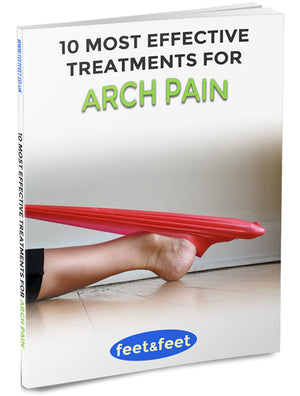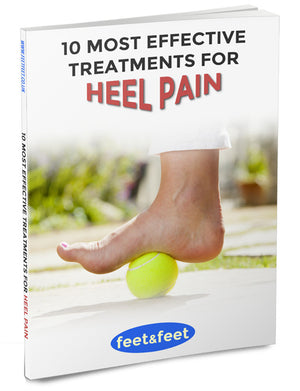The Best Treatments for Stress Fractures in the Foot

A stress fracture in the foot is a small crack or significant bruising to a bone within the foot, often caused by repeated force, overuse, improper footwear and poor conditioning.
They are common in athletes and those who engage in high-impact sports, though stress fractures can also occur in people who suddenly increase their physical activity levels.
The common regions where foot related stress fractures occur are the metatarsals (the long bones in the foot), the navicular bone (a bone on the top of the midfoot) and the calcaneus (heel bone).
In this article, we’ll be detailing the best treatments for stress fractures in the foot.
Stress Fracture Treatments
Here are the best treatments for stress fractures in the foot. Further down, we’ll also detail prevention methods too.
Ice Therapy
To reduce pain and swelling, you can apply an ice pack to the affected area and leave it for 15-20 minutes. Do this once every few hours. Ensure the ice pack is wrapped in a cloth to prevent direct contact with the skin.
We recommend you to use specially designed ice packs for medical and sports recovery purposes. These can wrap around the entire foot or simply cover a targeted region.
Foot Elevation
By keeping the foot elevated above chest level, swelling will be minimised as blood flows away from the legs.
You can lay down flat on a bed and use specially designed leg rest pillow or bed wedge (which tend to be more comfortable) or simply stack some cushions.
Prolonged Rest
One of the best treatments for a stress fracture is to rest for as long as necessary to allow the bone to heal.
Avoid weight-bearing activities as you can sustain even more damage. Use crutches or a wheelchair if necessary to completely offload the affected foot.
Nutritional Support
Taking the right vitamins will do wonders for your health especially if you don’t have a varied diet or you have a history of osteoporosis or other conditions that affect bone health.
Ensure an adequate intake of nutrients that support bone health such as calcium, vitamin D and vitamin B. You can read the full list of vitamins, minerals and nutrients here.
It’s recommend to take the most absorbable form of each vitamin as your body can absorb and digest it more effectively. However, these forms of vitamins are typically more expensive.
Medications
Over-the-counter pain relievers, such as acetaminophen or ibuprofen, can help manage pain and inflammation.
Avoid nonsteroidal anti-inflammatory drugs (NSAIDs) in some cases as they may potentially delay bone healing.
Orthotics
Custom orthotics may be recommended to address any biomechanical issues. In some cases, a cast or removable walking boot (cam walker) may be necessary to immobilize the foot and allow the fracture to heal.
Stress Fracture Preventions
In the latter stages of recovery, you should be ready to be more active. However, in order to prevent your current stress fracture from worsening or future incidents from occurring, adhere to the follow prevention tips.
Gradual Return to Activity
Slowly reintroduce activities, starting with low-impact exercises such as yoga, swimming or cycling. When your podiatrist or health practitioner advises, you can then gradually increase weight-bearing activities.
By slowly increasing the intensity and duration of physical activities, your body can gradually adapt, but always remember to incorporate rest days into your training schedule to prevent overuse.
Strength Training
Very often, when it comes to preventing foot injuries, strength training is neglected. By strengthening the muscles in your legs and feet, you’ll have significantly better support, stability and balance.
You can perform a variety of exercises that strengthen the heel, arch and sole including:
- Arch Lifts – Stand with your feet flat on the floor. Slowly lift the arch of one foot, keeping your toes and heel on the ground. Hold for a few seconds and then lower.
- Toe Presses – While standing, press your toes into the floor and try to lift your heels slightly. Hold for a few seconds and then lower.
- Heel Raises – Stand on the edge of a step or a sturdy platform. Raise your heels as high as possible and then lower them below the level of the step.
- Ankle Circles – Sit or stand with one foot off the ground. Slowly rotate your foot in a circular motion, first clockwise and then counterclockwise.
- Calf Stretch – Stand facing a wall with your hands against it. Place one foot behind the other and press the heel of your back foot into the floor.
We provide a variety of different foot exercise products that helps strengthen and improve the flexibility of your feet, such as foot rollers and resistance bands.
Proper Footwear & Support
Perhaps the easiest way to prevent foot stress fractures is by wearing the correct footwear with adequate support and cushioning.
Invest in high-quality, supportive shoes that are appropriate for your activity level and always replace worn-out shoes regularly to maintain adequate support.
If your footwear lacks the proper support (whether structurally or internally), then consider using supportive insoles or heel support inserts to compensate. It will make a world of difference.




Leave a comment